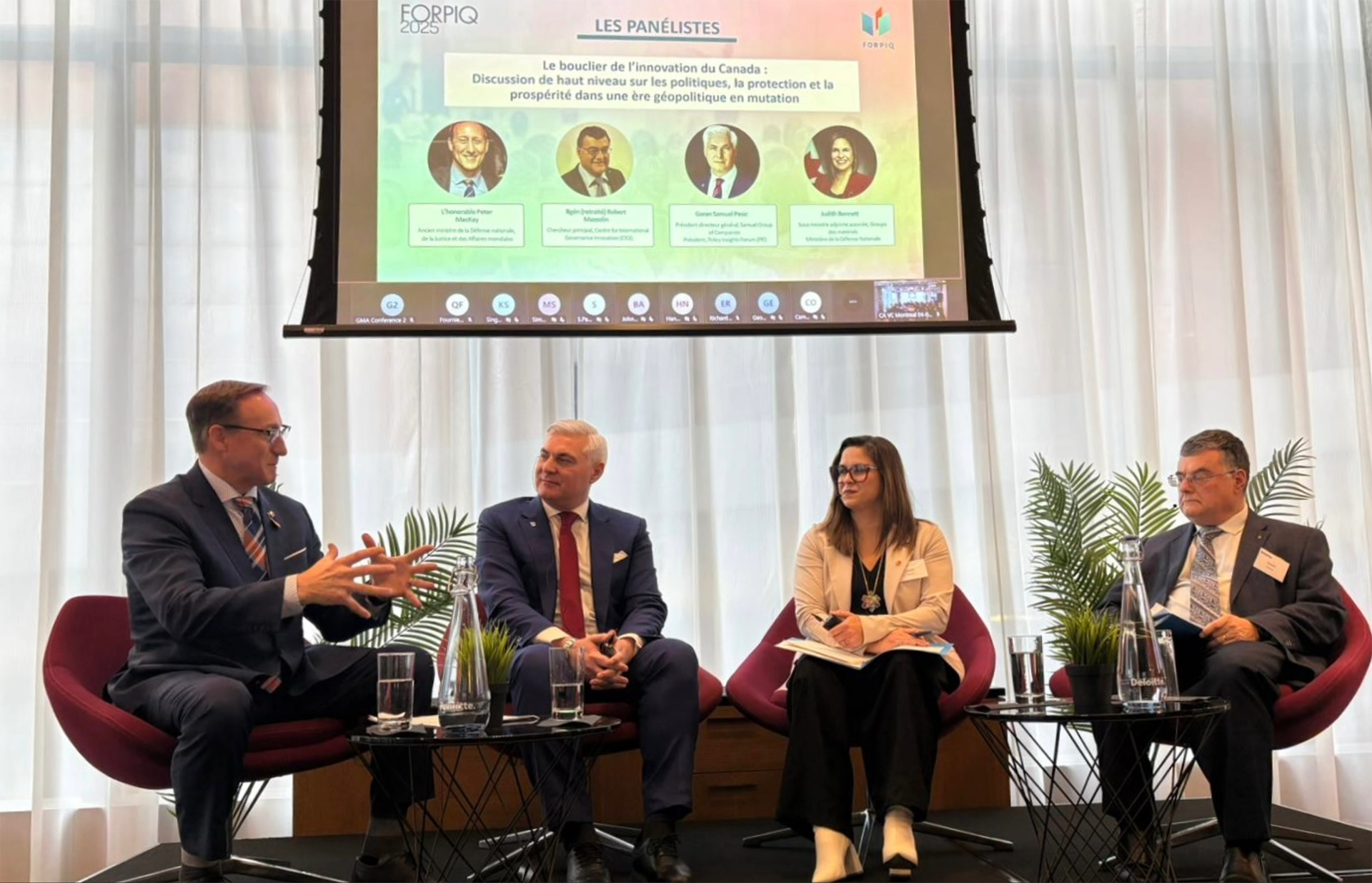REBUILDING, REARMING & REINVESTING…OH MY! Mark Norman – CAF – Defence Insider


%4010x.png)
Digital Marketing & Communications Specialist
Samuel Associates Inc.
As I was about to finish this latest column, the PM made an unprecedented and ambitious announcement related to the government’s intent to rapidly achieve their explicit commitment to “rebuild, rearm and reinvest (in)” the CAF. As reassuring and encouraging as this commitment is, I fear that “there be dragons” lurking in the shadows.
This welcome announcement comes a couple of weeks after the annual CANSEC exhibition that once again brought together industry, government officials and the media together in a focused event to explore the wide variety of innovative solutions available. The mood could best be described as enthusiastic, and there appeared to be an underlying sense of excitement. That optimism has no doubt been reinforced by the PM’s most recent announcement.
I would however advise caution; not because I have any specific doubt about the messaging from the PM and early indications from his government, but because I remain concerned about HOW the government can/will achieve the ambitious goals it has articulated.
Although this “hinge moment” at which we find ourselves is arguably an unprecedented opportunity to fix the CAF, it is unclear to what degree the announced defence investments will be prioritized in the broader context of conflicting demands and overall government capacity. It is also unclear to what extent the proposed procurement reforms will actually accelerate, or inadvertently delay, pressing priorities – at least in the short term – while the new processes, authorities and other improvements are implemented.
Beyond the long-overdue commitments to meeting our defence investment obligations, and the accompanying pursuit of procurement reform, there is a nasty combination of other challenges that must be addressed. Key among these are:
• Accelerate spending – especially on capital – in order to meet the explicit (or potentially emerging) targets;
• Spend responsibly by pursuing legitimate priorities and purchasing the right stuff (not just spending for the sake of spending);
• Reduce US dependency and its associated vulnerabilities;
• Increase Canadian industrial opportunity and build lasting resilience in the domestic supply-chain; and,
• Change DND’s internal culture of risk aversion and the continuous pursuit of “perfect” capability solutions.
I have no doubt that extensive research has been done already as many of these issues have been studied for years. To my understanding however, there has been very little external/industry consultation related to procurement reform specifically. If this is accurate, it should be of concern as an internally generated set of solutions will not get the country where we need to be. In this context, and within the space constraints of this column, I offer the following unsolicited advice aligned with the conflicting priorities described above.
Spend faster, but responsibly:
This is all about changing the authorities and the internal mechanics of approvals & contracting. However, this is NOT an excuse for ill-informed or impulsive decisions. CAF history is full of examples of “expedient” purchases made in haste that subsequently costing us a disproportionate amount of time, money and even lives. “Fast and rash” defence procurement is not a best practice.
Reduce US dependencies:
This will be a challenge as there is a bias baked-into CAF/DND culture. Recently the PM himself highlighted that upwards of 75% of military capital spending goes to US suppliers – this didn’t happen by accident. As with other economic sectors, pre-existing supply chains will need to be completely re-configured and this can’t happen overnight. The first step in this process is to explicitly de-prioritize US suppliers.
Increase Canadian Content:
This is my view offers the most promise for Canada; we must however be deliberate and smart. A simple rebranding or repackaging of the extant ITB system is NOT the solution. Simplifying the decision process to EXPLICITLY prefer Canadian suppliers from the outset is the first step. Beyond that, we should rapidly “funnel” suppliers by way of a simple pre-qualification process whereby Canadian suppliers should be given priority over foreign (non-ITAR) suppliers, and lastly US suppliers in that order. This process could (and perhaps, should) fit onto a single piece of paper!
Simplify internal DND “requirements” processes:
DND likes to point elsewhere to identify process “choke-points” across government. Although there is some merit in this claim, I’m reminded of the old proverb about stones and glass houses. Specifically, the requirements development, options analysis, and costing processes (among others) within DND are far too convoluted, laborious and time consuming. DND should be given strict time limits and content constraints for the production of project documentation. Further, the CAF should be compelled (and incentivized) to prioritize Canadian suppliers and capabilities that contribute directly to the defence of Canada/North America. Lastly, the CAF/DND must – with the full support of government – aggressively reduce dependence on “ownership” and the excessive duration of the “life cycle” of platforms/systems. Among other advantages, this would reduce “requirements-creep” at the beginning of the cycle, drive-down the risk and costs of through-life obsolescence, and encourage technological innovation and adaptation over time.
The proposed series of “marquis” initiatives as announced by the PM is a good initial step. These projects should be used to not only focus the machinery of government, but also to drive innovation and change throughout the myriad of relevant processes and organizations.
I’m optimistic, and confident, that this can be done. The alternative is yet another set of empty promises. The CAF – and the country it serves – can no longer afford the disappointing lack of imagination and commitment that has contributed to the crisis we face today.
%4010x.png)
%4010x.png)





